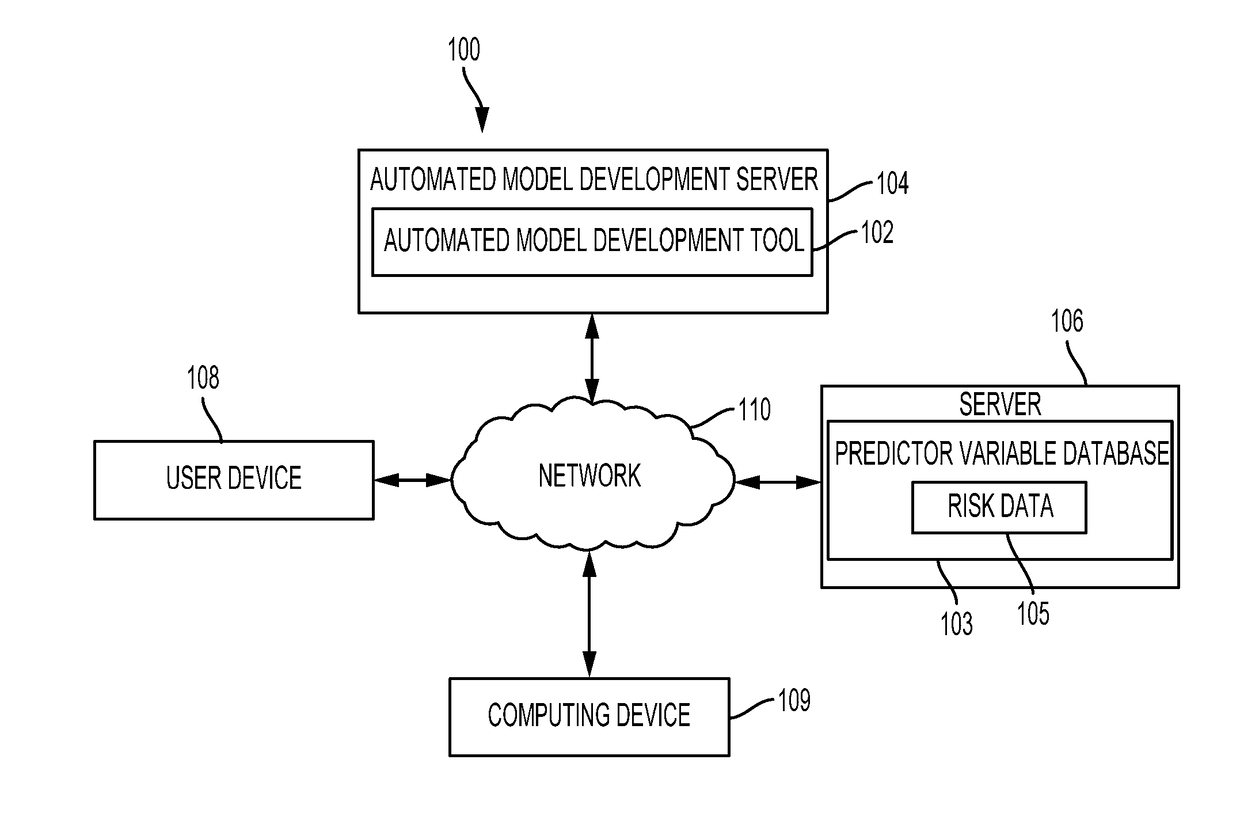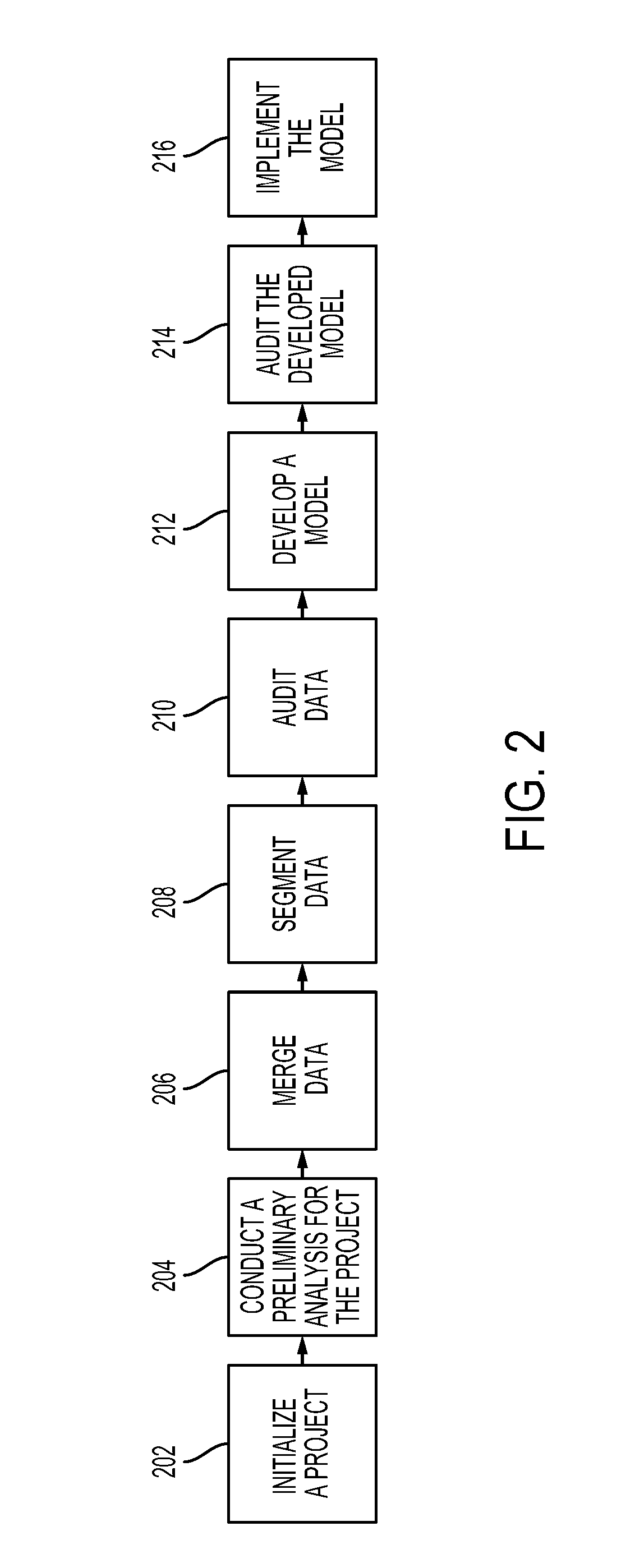Automated model development process
a technology of automatic model development and analytical model, applied in the field of computerimplemented systems, can solve the problems of difficult manual format or manipulation, difficult to manually develop complex algorithms for developing analytical models, etc., and achieve the effect of reducing the number of predictor variables and increasing the predictive strength
- Summary
- Abstract
- Description
- Claims
- Application Information
AI Technical Summary
Benefits of technology
Problems solved by technology
Method used
Image
Examples
Embodiment Construction
[0028]Certain aspects and features of the present disclosure are directed to an automated model development tool for automatically generating, modifying, selecting, or otherwise developing one or more analytical models. Analytical models can be used for identifying relationships between sets of predictor variables and one or more output variables in various machine learning applications.
[0029]As discussed above, manually developing accurate analytical models may present difficulties. Calibrating the various algorithms used to generate an analytical model, which may involve a precision that cannot be obtained by manually development of analytical models, can improve an accuracy with which the analytical model can identify such patterns and express the various patterns in a usable format (e.g., as a mathematical equation or function). Manually developing the analytical model may cause errors in the analytical model development process, which can decrease the accuracy of the analytical...
PUM
 Login to View More
Login to View More Abstract
Description
Claims
Application Information
 Login to View More
Login to View More - R&D
- Intellectual Property
- Life Sciences
- Materials
- Tech Scout
- Unparalleled Data Quality
- Higher Quality Content
- 60% Fewer Hallucinations
Browse by: Latest US Patents, China's latest patents, Technical Efficacy Thesaurus, Application Domain, Technology Topic, Popular Technical Reports.
© 2025 PatSnap. All rights reserved.Legal|Privacy policy|Modern Slavery Act Transparency Statement|Sitemap|About US| Contact US: help@patsnap.com



